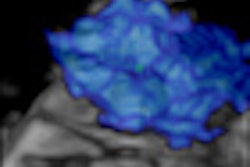Ultrasound-guided surgery to remove breast cancer tumors is more successful than standard surgery and should become the new standard of care, Dutch researchers said at the European Breast Cancer Conference (EBCC) held last week in Vienna.
Breast-conserving surgery for palpable breast cancer is generally performed with guidance from a surgeon's palpation only, without help from intraoperative tumor localization techniques, according to the researchers. This method results in a high rate of excision margins with cancerous cells, so the group studied whether ultrasound-guided surgery would provide better results.
The researchers randomized 124 patients with palpable early-stage breast cancer to either ultrasound-guided surgery or standard palpation-guided surgery (PGS). Among the 61 women in the ultrasound group, only 3.3% of the margins contained cancerous cells, compared with 16.4% among the 63 women in the palpation group. As a result, ultrasound use led to a significant reduction in re-excisions, mastectomies, and extra radiotherapy.
By using ultrasound, 96.7% of all tumors were excised with adequate, tumor-free margins, compared with only 83.4% in the PGS group, yet the volume of tissue excised was significantly smaller in the ultrasound group, the researchers said. The amount of healthy tissue removed in the ultrasound group was 40 cm3, compared with 58 cm3 for the palpation group.
The clinical implications of the study should be addressed in international guidelines, according to the researchers. Palpation-guided surgery should be replaced with ultrasound-guided surgery, becoming the standard of care for both palpable and nonpalpable breast cancer surgery, they added.
However, the chair of the EBCC said that while the study shows promise, the findings need confirmation from other teams of surgeons before becoming standard practice.



















